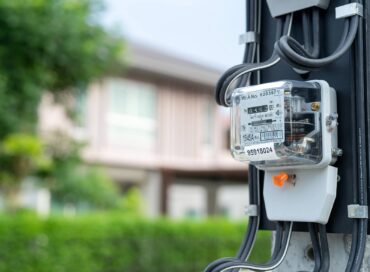 Nobody likes getting their electric bill — especially when their energy costs are higher than expected. Worst of all is when individual households can’t pinpoint exactly how they spent so much energy when there’s no immediately obvious underlying cause.
Nobody likes getting their electric bill — especially when their energy costs are higher than expected. Worst of all is when individual households can’t pinpoint exactly how they spent so much energy when there’s no immediately obvious underlying cause.
The fact is that sometimes energy costs go up because of factors that have nothing to do with our actions or intentions — factors that, unless we know about them and how to resolve them, we can’t control. Monitoring and managing your energy expenditure is crucially important for a variety of reasons, but ultimately, you can’t deal with a problem you don’t know about.
Fortunately, household owners don’t have to wonder about what those factors are. Armed with knowledge about where and why your home is using energy, you can take steps to address those issues and reduce your home’s energy costs. In this article, we’ll break down the many factors that influence your electricity bill, empower you to audit your household’s energy usage and provide alternatives to energy guzzlers that minimize power expenditure.
Factors that Influence Your Electric Bill
If you aren’t in the know, it’s easy to blame rising energy costs solely on inflation. And while that is, indeed, a factor, it’s one of many that subtly push your utility bills into more expensive territory. Demographics, geography, volatile climate conditions and governmental programs all play their part in determining your month-to-month payments. Understanding how each of these factors plays into your specific situation will empower you to take steps to mitigate their impact.
Let’s break each of them down quickly:
- Regional impact: Your location plays a huge role in how expensive your power bill is, with average climate, regional energy infrastructure and economic conditions all tipping the scales in one way or another. Living in states with climates that frequently fluctuate, without energy-efficient infrastructure or with high costs of living means you’ve started out with the scales weighed ever-so-slightly against you.
- Household size and structure: Larger homes tend to use more energy — whether that energy is expended for climate control, lighting or powering appliances. Houses that are improperly insulated also subtly bleed energy, making heating and cooling systems work harder to achieve the desired effect.
- Energy-efficiency program awareness: In many cases, programs on the federal and state levels intended to facilitate energy efficiency aren’t always taken advantage of. This can lead to higher costs, causing unnecessary financial distress and energy expenditure.
These factors aren’t things you necessarily have control over, leaving you with the natural question: How may they be affecting me, and what can I do about them?
Assessing and Reducing Electrical Costs
In assessing the specific nature of your costs, learning how to read and interpret historical data is key to reducing your electrical costs. This can help you identify if your region is disproportionately affected by climate fluctuations, which patterns negatively contribute to energy over-expenditure and which external socioeconomic factors may be influencing your bill. This also allows you to compare your current provider with others in your area, so you can limit your monthly spending by switching to a less costly utility company if another option is available.
Understanding whether you’re paying a disproportionately large amount for the same service as your neighbors requires you to break down your bill. In the breakdown your provider gives you, there will be two major components: a supply charge and a distribution charge. Inflated distribution charges, as well as miscellaneous fees attributed to various “services” you never agreed to pay for, are indicators that you should switch providers.
You’ll also want to take a closer look at the types of plans your provider offers. Fixed-rate plans have a defined rate for the length of your plan, while month-to-month variable-rate contracts allow the provider to change the rate at their discretion. Indexed-rate plans are often tied to the value of an external resource like natural gas — which is all well and good until the price for that resource fluctuates.
Fixed-rate plans are the ideal choice if you live in an area where energy access is highly regulated. However, it might be worth researching if you live in a region with a deregulated energy market, as you’ll have a wider variety of retail energy providers (REPs) to choose from. Deregulated energy markets invite competition for REPs that aren’t beholden to one major conglomerate, driving down prices for the average consumer and allowing you to switch rapidly if unknown service fees drive your bills up.
Further Avenues of Energy Conservation
Once you’ve settled on the plan that works for you, you can then continue to lower your service costs by exploring energy-efficient solutions for your home. Options like hybrid heating systems, energy-star-rated appliances and energy-efficient lighting provide the same services by using less energy, cutting costs with no loss in quality. You can also explore renovating areas where structural weaknesses are causing energy loss. Replacing seals on windows, installing new insulation and patching any other known vulnerabilities are great places to start.
We hope this helped you understand your electric costs and gave you the tools to limit your energy expenditure. Study your electric bill, employ sustainable solutions, and you’ll see those unreasonable costs start to fall.
Jesse Shaver is a marketing director and content management expert at ElectrictyRates.com. Learn more about a recent study by ElectricityRates on energy usage across the United States.


























